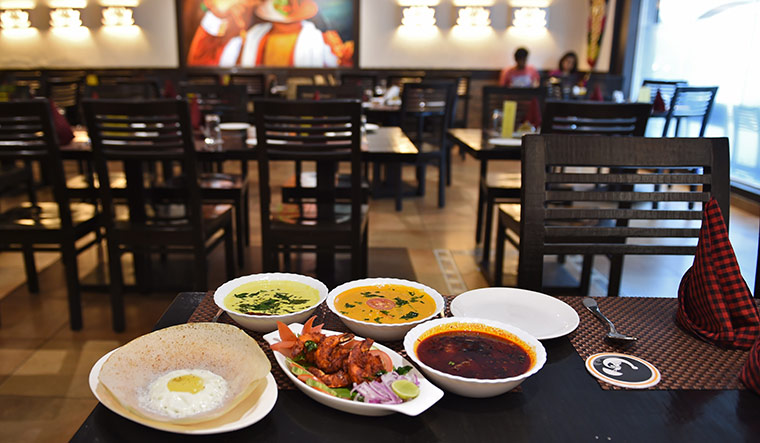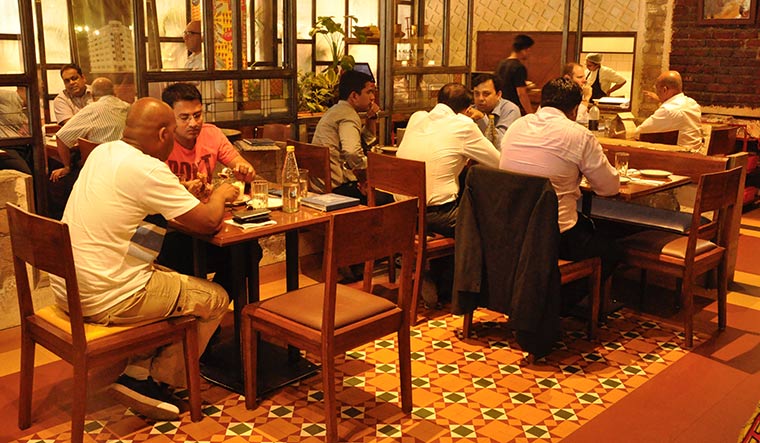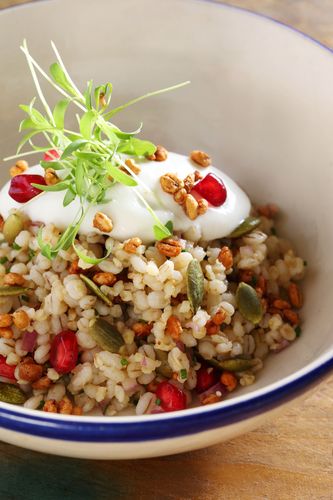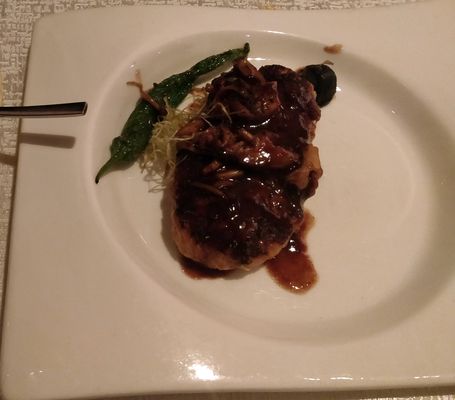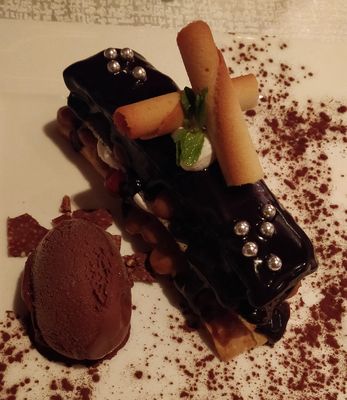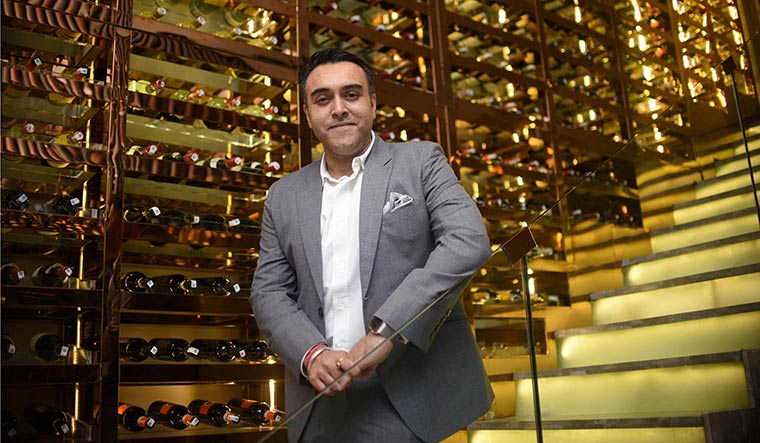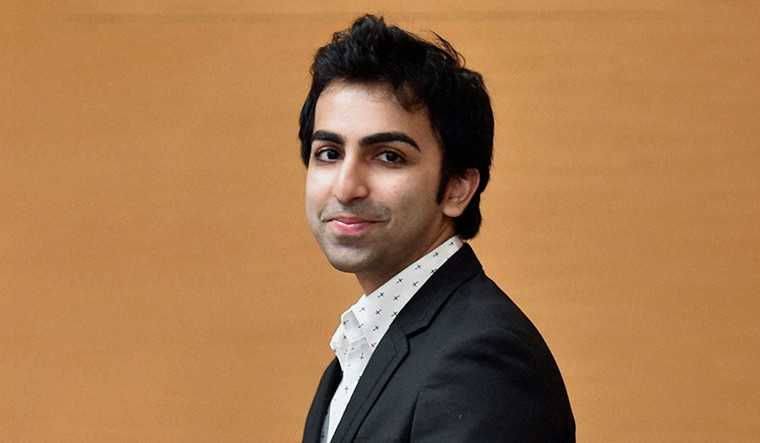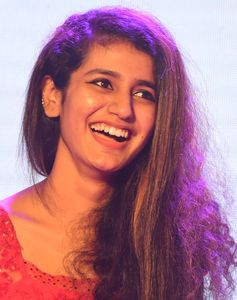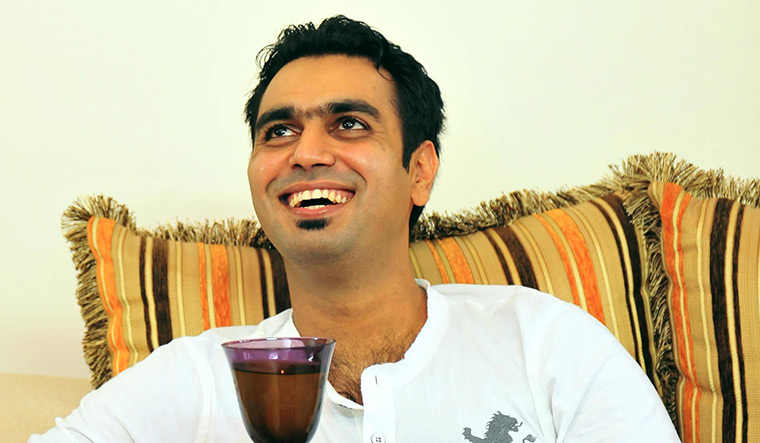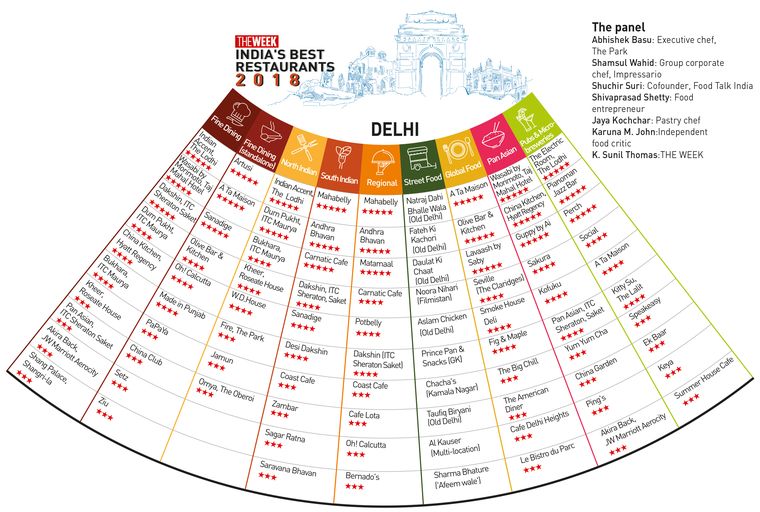There is no sincerer love than the love of food.
George Bernard Shaw
Admit it. Food has become more experiential than existential to most of us. Unique every time. A pleasure to be indulged in, guilty or otherwise. An interlude to look forward to amid the drudgery and despair of our rat race. A pampering of our taste buds, one new exotic taste (or many) at a time. A restaurant outing is no longer a pleasure just for the palate, but a myriad experience that takes in all of our senses and yes, emotional intelligence, too.
Gone are the days when you either went to an Indian-Chinese restaurant, with its distractingly red lanterns, and were satiated by your noodles and chilli chicken order (preceded, of course, by sweet corn soup) or a QSR (quick-service restaurant) for either a dosa or a predictable tandoori menu. A detour to an upscale fine dining restaurant, possibly in a five-star, was for special occasions. And, the post-liberalised 1990s brought in pizzas and burgers to the melting pot.
A lot has changed since then. The restaurant boom in the past decade or so has spawned a fresh crop of restaurants (today, many prefer being called café or bistro or kitchen or lounge) that have pushed the envelope when it comes to the way Indians are eating, what they are eating and how they are eating. Today, we are a country that does not eat out on occasions, but eats out for social engagement and experience. According to a recent study by real estate consultants CBRE, 14 per cent of Indians eat out at least once a day, well above the global average of 9 per cent (southeast Asian nations like Hong Kong, Malaysia and Thailand top the list at around 25 per cent). Indian millennials spend time eating out at an average four-and-a-half days a month (the highest time spent on a leisure activity after hanging out at malls, which comes in at 5.2 days).
With Indians ready to loosen their purse strings for a good eating out experience, as was seen even during the worst of the economic slowdown, a creative bunch of restaurateurs have stepped in with innovative concepts. Names like Zorawar Kalra (‘Czar of Indian cuisine’ Jiggs Kalra’s son who runs a bunch of super-hit outlets like Made in Punjab, Farzi Café and PaPaYa) and Riyaaz Amlani (of Smoke House Deli and Social) are today A-listers on the red carpet circuit—restaurateurs who have considerable star value for their drive, entrepreneurship and innovative spirit.
And, it is some innovative spirit that has provided food for thought to an ever-changing business, to go back to its roots and rediscover something that was passed up for far too long—India’s regional cuisine and the repository of tastes, flavours and stories it has been hiding. Yet, it is food like your grandma never used to cook, and therein lies the twist.
For decades, the only cuisine at par with Punjabi food (that had become, de facto, ‘Indian’) was the ‘Udupi’ version of south Indian staples like idli, vada and dosas. But recently, there has been an upswing in local food across the country, and not just in their home market. Take, for example, the ‘viral’ popularity of Dindigul biryani, a spicy variant of the popular rice preparation, best eaten in its mutton version. Today, it is hard to walk through a high street in Chennai without encountering an eatery proudly flaunting this local dish. Not just Chennai, anywhere from Kochi to Mangaluru, you will find options, ranging from hole-in-the-wall takeaways to full-fledged restaurants proudly proclaiming ‘authentic’ Dindigul biryani on the display board outside, catering to a happy clientele, most of whom won’t even be able to locate Dindigul on a map without googling. The same goes for Hyderabadi biryani, which has become a ‘by the kilo’ favourite in the national capital, while its compatriot-in-popularity, the haleem, is trending big time in places like Bengaluru.
Even more exciting has been the rise of regional cuisine on a universal restaurant experience level. While the metros always had their share of regional restaurants catering primarily to migrants who pine for their home food, the new trend is different. It is regional food repackaged as a casual, cool, fun dining experience meant for anyone, including those who perhaps haven’t been to the region where it originated from and don’t have a two-turnips-worth opinion or knowledge about it in the first place.
Take Mahabelly in Delhi’s upscale Select Citywalk, which topped THE WEEK’s south Indian restaurants list. Unlike earlier Malayali food offerings in the national capital that were budget makeshift stalls in local markets with dubious hygiene standards or clichéd fine dining spaces playing Carnatic music and having faux banana leaf motifs, Mahabelly kept itself cool, cuisine-centric and firmly non-serious.
The play starts with the name, a pun on Mahabali, the mythical king whose annual arrival, à la Santa Claus, is celebrated as Onam in Kerala. And, it continues on to the fun wall art, an innovative take on cocktail descriptions and a simple enough food menu that retains the original names of the dishes, with a crisp description of the ingredients and style of preparation in English.
For Mahabelly partners Thomas Fenn and Zachariah Jacob, both with no background in the food and beverages industry, it was only a matter of doing what they loved. “When we ideated, the consensus was either do what others were doing, or create a niche for ourselves,” says Fenn, in a throwback to when Mahabelly opened in 2015. But the boys, who came to Delhi as students at St Stephen’s College, were careful not to repeat the mistakes of those before them. “We realised that one of the biggest perception of the Delhi clientele [about Kerala cuisine] was the problematic smell of coconut oil,” they say. So they took steps to get around it, using coconut oil only at the crucial stir-fry stage and using other mediums for the rest. They are also open to requests for vegan and gluten-free food, even while not scrimping on the authentic taste, though Fenn and Jacob admit standardising Mallu food, like a pizza or a burger, is difficult. But, the advantage? “With more people travelling and watching food shows on TV, there is a change in perception regarding other cuisines,” says Fenn. “It also helps that regional food is getting trendy.”
That trendiness can be single-handedly attributed to one restaurant that people cannot stop raving about for the past couple of years—The Bombay Canteen in Mumbai’s Kamala Mills (Lower Parel). Partners Yash Bhanage and Sameer Seth roped in chef Floyd Cardoz, winner of Top Chef Masters who used to run the celebrated Tabla restaurant in uptown New York for an innovative adaptation of food from various parts of India in all its bold flavours, but in a fun presentation. “We started with the question, how do we re-imagine Indian food?” say Seth and Bhanage.
The answer is a sexed-up version of quintessential street food and British-era fare that were considered ‘too regional’ or ‘too humble’ for high-end kitchens till now. Want just a sandwich? Have one with the de rigueur cheese and chicken, but with a surprise dash of Bhavnagari chillies and sev! A beet and water chestnut salad comes soaked in Goa vinegar. The same goes for drinks, too. The thamba is a cocktail of sparkling wine, white rum, cranberry juice, and a dash of homemade kokum syrup.
Far from gimmicky, the result has been an entry into the ‘World’s 50 Best Restaurants’ list, and a trend that has spread far and wide. The Kejriwal toast (a toast or bun with fried eggs, chillies, cheese and mint), till then limited to the Willingdon Club, a Raj-era outpost in Tardeo, Mumbai, became so in vogue after Cardoz, along with chef Thomas Zacharias, included it in The Bombay Canteen menu, that restaurants from The Classroom in Gurugram to airport outlets like Theobroma now offer it.
“Konkani food, for example, was always present in Mumbai’s foodscape,” points out Bhanage. “The Bombay Canteen’s success was in taking these kind of food, building up the stories around their origins and elevating them to a great experience.”
Yet, some believe that regional food getting ‘cool’ is a passing phase. “As much as I hate the term, ‘multi-cuisine’ restaurants do tend to do better,” argues chef Anuj Kapoor, who was among the team that launched Olive Bar & Kitchen in Delhi and has just launched the luxury Azaya Beach Resort Goa. “Members of any group, whether corporate or family, can seldom come to an agreement on even a broad cuisine type [read Indian, European, Chinese, Japanese]. Good luck trying to get them to agree on Karwari or Chettinad if they are in Delhi; Bengali or Andhra if they are in Mumbai and so on!” Adds food consultant Aftab Sidhu, “One regional cuisine cannot generally give you more than three or four superb dishes. Then what do you do?”
Perhaps that’s exactly where the new breed of ‘Bombay Canteen-like’ cool, fun dining places work, as the menu is a smorgasbord of dishes from many corners of the country, but innovative, with the overall experience of the outing providing the finishing touch. In fact, ‘the experience’ is a term you will keep hearing, and that involves not just the food, the decor (quirky, but nothing too posh or forbidding), presentation (menus that tell the story behind the dish, its ingredients and its twist, preferably in a humorous, yet, simple way as well as the plating), and very importantly, the service.
“You have to turn a restaurant outing into an ‘experience’,” says Seth. “Today, service doesn’t mean servitude. We [train] our staff to understand the food, so that he can chat with the guests on an equal level and help build an image in their minds.” Kapoor of Azaya agrees, “Not just product knowledge and service with an attitude, but creative and large sharing cocktails, overall buzz, entertainment available at the venue—all these factors contribute to the experience.” Adds Bhanage, “If a diner leaves with a feeling they have been well taken care of, they will be back.”
The result is seen in a glut of ‘wanna-be Bombay Canteens’ across India (food critic Roshni Bajaj Sanghvi put this number at 20, and that was a year ago) like The Pink Poppadom in Bengaluru (rasmalai baked Alaska, anyone?) or Cafe Lota in Delhi (sabudana popcorn). And, therein lies their novelty appeal—how do you even begin to describe which specific region food in restaurants like, say a Social or a Farzi Cafe, come from? And even where the treatment has stuck to the authentic recipes, the rest of the frills are anything but clichéd—take the cool vibes at places like Carnatic Cafe or The Potbelly Rooftop Cafe in Delhi.
“The whole ‘I can make this at home’ attitude seems to have moved over,” says Sidhu. “Regional Indian cuisine is really going to evolve. There are restaurants being opened up on niche cuisines hitherto not even heard of, like the northeast tribal food restaurant [in Delhi’s Hauz Khas Village].” The promoters of The Bombay Canteen have gone on to launch O Pedro in Mumbai, focusing on Goa’s lesser known and more nuanced dishes, with cocktail recipes sourced from the sunshine state’s almost forgotten ‘aunty bars’. Concurs Seth, “There is so much within these cuisines left to be rediscovered. Not just food, but also with liquor, the various types of country brew, local culture and traditions. There are so many stories waiting to be told.”
Best Bites
CUSTOMISED CHINESE
The last memorable meal I had was at Memories of China, a restaurant in Vivanta by Taj, Bengaluru. It had a great combination of ambiance and food. The restaurant is grand, classy and very exclusive. I go there once in a few months. I went for dinner with a whole bunch of cousins. It was a normal outing on a weekend. I don’t like eating anything heavy for dinner. I generally avoid Indian food. That’s why I like Chinese, because it sits lightly on the stomach. The best part about Memories is that it customises its food for you. So, I had a dish of tofu, broccoli and mushrooms in a nice soy bean sauce along with fried rice. It was made perfectly to our taste. I like it a little spicy, but not too spicy.
The restaurant gets brownie points because it had washroom facilities for the differently abled. It had a very positive vibe. The staff was warm and flexible. Sometimes, you want certain things done in a certain way. They were willing to do that. Even if they recognised me, they didn’t make it obvious.
– PANKAJ ADVANI, former world snooker champion
Best Bites
CHAAT CRAVINGS
My favourite restaurant is the one near my home (in Thrissur) called Kalyan Veg Platter. We are all vegetarian, so we love to go there. We end up eating there at least once or twice a month. You get all types of food there—chaats, pizza and Chinese. It is done up very well, and they play nice music. I love their aloo dum biryani. Perhaps, my most memorable trip was after my song went viral. I had gone there with my family. The owner of the restaurant recognised me, and wanted to take a photo with me. He also brought us a complimentary brownie at the end of our meal.
I am a big foodie. I love trying out new dishes. But, somehow, I mostly end up eating a lot of junk food. We lived in Mumbai when I was very young, and I used to love the chaats and vada pav. I still miss the fact that you don’t get these items in Kerala. Recently, I had gone to Mumbai and got a chance to relish a plate of vada pav.
– PRIYA PRAKASH VARRIER, actor and internet sensation
Best Bites
ORIENT IMPRESS
Last month, I was in Ahmedabad on a book tour to promote my latest book, Will You Still Love Me? I was staying in Hyatt, and went to a new restaurant there called TG’s – The Oriental Grill. It served excellent oriental food from southeast Asia. The restaurant is rectangular, with four open grills in the middle. The seats are arranged around the grills. You have a personal chef who cooks teppanyaki [Japanese] food as you like it. The burnt garlic chicken soup there was great, and so was the sushi, although I am not a sushi person. I also had really tasty sticky rice with shrimp. They provide some exotic types of Japanese tea at a very reasonable price.
– RAVINDER SINGH, author
Best Bites
SIMPLE DOES IT
One of the best places I have been to recently is a family-run haveli called The Bangala in Chettinad, Tamil Nadu. In India, you usually get two types of cuisine—either delicious, but simple and unsophisticated dhaba food; or fancy, often pretentious food you get in five-star hotels. You don’t find here what you often find in countries like Italy—simple, family-run places, where you see extreme sophistication in cooking and simplicity in presentation.
We were served food in banana leaves by people in lungis and homespun clothes, no fancy liveries. I had some great crab and quail preparations, and imaginative puddings using semolina, among other things. I went there with Olivia [wife], Tishani Doshi [Indian poet, journalist and dancer] and her husband to celebrate, since her husband and I share a birthday in March. We ate so much that I am still on a diet.
– WILLIAM DALRYMPLE, author
BEST RESTAURANTS 2018
Methodology
THE WEEK correspondents held panel discussions with food experts to rank the best restaurants in seven cities—Delhi, Kolkata, Mumbai, Hyderabad, Bengaluru, Chennai and Kochi. The best restaurants for several categories such as Fine Dining, North Indian, South Indian and Global Food were selected and ranked by the experts comprising chefs, restaurateurs, food critics, food entrepreneurs, food writers and bloggers, and food enthusiasts. (List of experts given with city-wise graphics.)
All restaurants which the panel felt could be termed the best for the category in each city were included. Street food is included but not ranked because the cuisine is vastly different, even within a city. THE WEEK’s Culine Scale was applied to all other categories—five stars for the top 30 percent, four stars for the next 30 per cent and three stars for the last 40 per cent.





